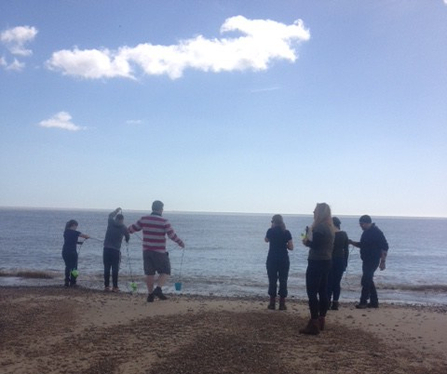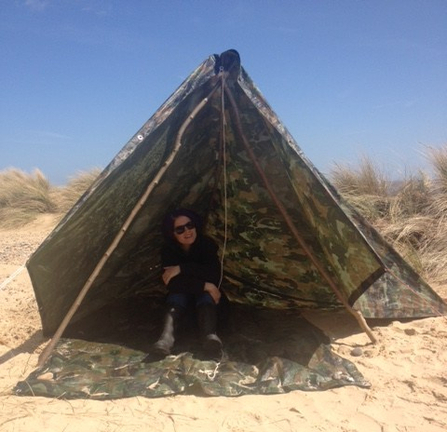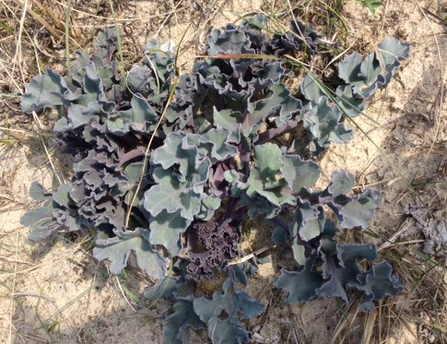As interns we were lucky enough to join a group of 6 other teachers and educators, to start work on our Level 3 Wild Beach Leader qualification, which is accredited by OCR. I’m really looking forward to completing the follow-up work, which will be done by compiling a workbook, to record all our findings from the 3 days and evidence our practical work.
Sea peas, plankton and plastic pollution: learning to be Wild Beach Leaders in Lowestoft

We spent three jam-packed days on South Beach in Lowestoft, learning a wonderful mix of skills, from building shelters and fires, to identifying marine flora and fauna, from plants to plankton! Naturally, all the necessary knowledge for leading a group safely on the beach was covered, including reading tide timetables and setting boundaries on the beach. To my delight we also discussed some inspiring content on marine conservation and pollution, to help instil environmental awareness in our students. Having studied pollution control policies in the past this was music to my ears – and a great way to get up to speed on Marine Conservation Zones in Suffolk.

Our group was a really interesting mix of people, including a brilliant primary school teacher from the local school on the beach road. Ruth really knew her local beach and invited us into the school on the first day, after we got blasted by wind and rain all day. We were extremely grateful to dry off in the staffroom and share ideas on good sources of information on coastal habitats over a hot cup of tea. Whilst chatting to the others, it was particularly interesting to draw comparisons between our Wild Beach work and some of the more ubiquitous Forest Schools work others are already doing. It was clear to all of us that our coastline is a vast untapped learning resource, and one that the group was really excited about using and celebrating.
As a person fairly new to education it was also really useful for me to see a range of ways to bring elements of the national curriculum into a beach activity day, including how to measure the wind speed and cloud cover with children, how tides work and how coastal habitats are affected by tides, and how to observe and quantify marine vegetation using quadrats. It’s been a while since I used a quadrat and I really enjoyed the chance to refresh my skills and get a good practical understanding of the coastal environment. There is something empowering about understanding your surroundings, and through observation and a touch of mathematics, I felt the beaches I knew so well as a child coming back to me, but in a new light. Sea holly and sea kale are a delight to behold, as was the luminous orange plankton I caught in my DIY plankton net. There’s nothing like paddling on a hot day, but this time with a purpose!

Having had a few years off any academic work, it was really exciting for me to to be learning again in a structured programme. But most of all it was refreshing to spend a few days observing, creating and sharing ideas with others – what a treat! We even managed some treasure hunts, kite-making and a proper beach barbeque. This course comes highly recommended! If you’d like more information on the course, contact Bev Rogers, our Learning Development Officer at the Trust.

